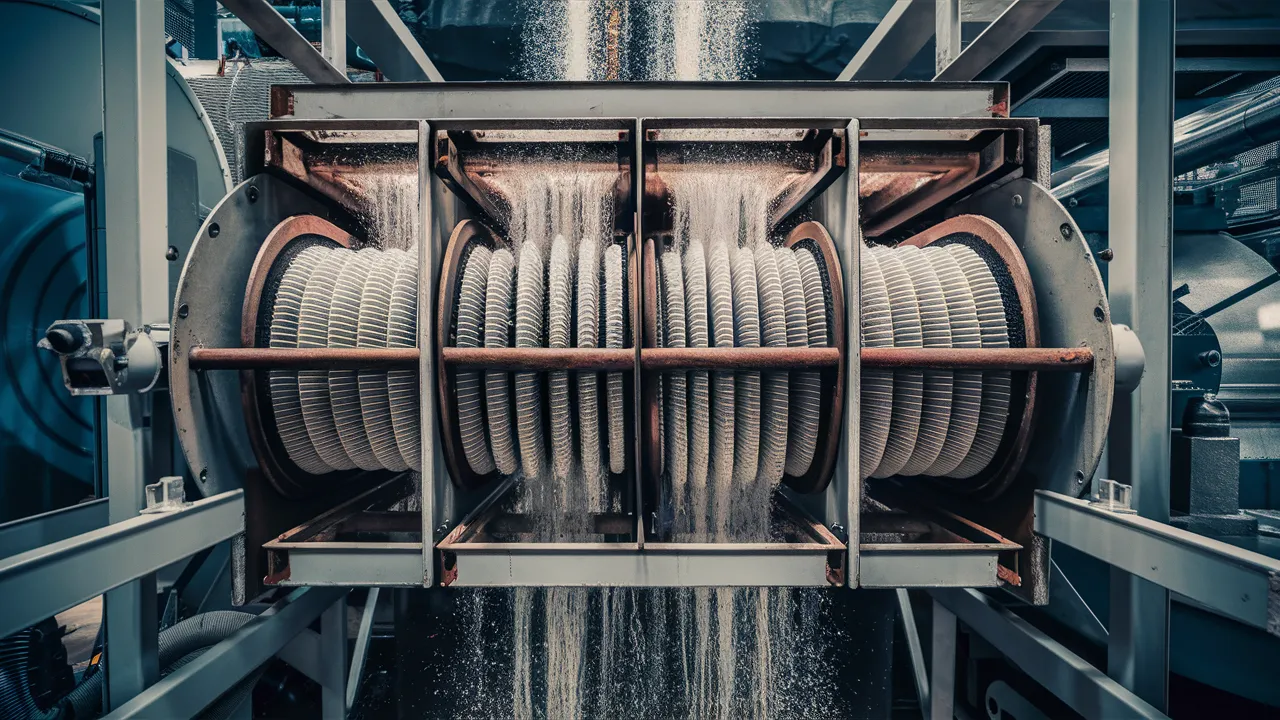Optimize industrial waste management with plate and frame filtration. This method offers numerous advantages, including efficient removal of impurities, versatility for various applications, and cost-effectiveness. Discover how plate and frame filtration streamlines waste treatment processes, enhancing efficiency and environmental compliance in industrial settings.
Why Plate and Frame Filtration is Relevant Today
Growing environmental awareness and regulatory pressures are reshaping industrial waste management. Using vertical plates and frames as filters, plate and frame filtration systems emerge as efficient solutions for solid-liquid waste separation. These systems offer flexibility and effectiveness, driving the rise of plate and frame rental services and enabling cost-effective access to advanced waste management technology.
Environmental Benefits of Efficient Filtration Systems
The more efficient a filtration method is, the less waste it typically produces. This efficiency is particularly crucial from an environmental standpoint, given that waste minimization is a critical objective in sustainable industrial practices. Plate and frame filtration systems score high on this count, offering superior separation capabilities that help reduce the volume of waste generated. Specifically, the fine filtration afforded by these systems leads to a drier cake (solid waste) and clearer filtrate (the liquid component), often clean enough to be reintroduced into the manufacturing process. Such a closed-loop approach conserves water, reduces the burden on waste disposal facilities, and limits harmful discharges into the ecosystem. This synergy of environmental stewardship and industrial efficiency exemplifies a sustainable way of business that resonates well with contemporary environmental ethics and long-term ecological strategies.
Comparative Analysis: Traditional vs Modern Filtration Techniques
A closer look at traditional versus modern waste management practices reveals a significant performance gap. Historically, industries have used various approaches for waste management—some of which were crude and lacked the finesse of today’s technologies. Traditional methods frequently resulted in higher volumes of waste, lower recovery of usable materials, and increased environmental impact. In contrast, modern frameworks, such as those offered by plate and frame systems, boast a series of advancements—greater precision in separating particulates, the capability to handle various waste compositions, and improved overall waste reduction. Moreover, the operational advantages of these modern systems lay the foundation for more robust environmental management, including better compliance with regulations and greater corporate responsibility towards ecosystem preservation.
Cost-effectiveness of Plate and Frame Rental for Waste Management
Affordability is often a prime consideration for businesses when it comes to the adoption of new technologies. The realm of plate and frame filtration is no exception. Opting for a rental service instead of an outright purchase can be a strategic financial decision, allowing for operational scalability and flexibility without the burden of capital investment. This approach mainly benefits industries where waste output can vary greatly, requiring equipment that isn’t consistently used. Plate and frame rental services meet this need with flexible leasing arrangements, making them a favorable choice for many businesses. This economic model not only aids in cost control but also in maintaining financial liquidity, which is critical to the agile management of an enterprise.
Strategies for Implementing Plate and Frame Systems
Transitioning to plate and frame filtration technologies can be significant for any organization. As with any major operational change, it requires a systematic approach that considers all aspects of the transition—from the initial waste stream assessment and selection of suitable filtration media to the training of personnel and plans for maintenance. Companies must set clear objectives for what they hope to accomplish with the new system, such as waste reduction goals or specific environmental compliance thresholds. It is also essential to have the buy-in of all stakeholders, as operational shifts can affect multiple departments or teams within a company. Drawing on the expertise of waste management professionals and filtration technology specialists, organizations can iron out a detailed blueprint for effectively implementing plate and frame systems.
The Future of Waste Management: Innovations and Prospects
Looking ahead, the field of waste management seems set for an era marked by technological innovations. With the environment being an ever-increasing global concern, it is anticipated that advanced filtration solutions like plate and frame systems will become cornerstone technologies for new waste management strategies. Intelligent automation, real-time monitoring, and adaptive processing capabilities are just a few of the ongoing developments that promise to elevate future industrial processes’ efficiency and environmental compatibility. The influx of these intelligent solutions dovetails with the broader industry trends towards sustainability and circular economics—trends that will likely steer plate and frame technology toward new heights of environmental stewardship and operational excellence.


